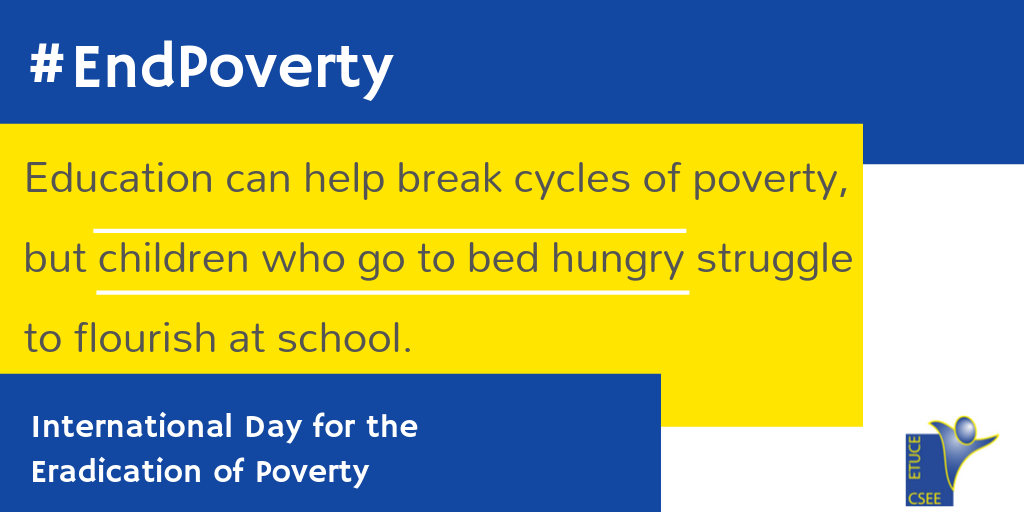Children in the spotlight on the International Day for the Eradication of Poverty 2019
Published:
Education can help break cycles of poverty, but children who go to bed hungry struggle to flourish at school. 2019 marks the 30th anniversary of the United Nations Convention of the Rights of the Child (UNCRC), but too many children are still in poverty and excluded from the full benefits of education.
This year’s International Day for the Eradication of Poverty focuses on children, so ETUCE calls for schools and teachers to get the funding and support they need to lift children out of poverty.
Child poverty is a pressing issue around the world, including Europe. According to Eurostat data, children are the age group at the highest risk of poverty or social exclusion in the EU. These children are less likely to do well in school, be healthy and realise their full potential later in life. This is why teachers and their trade unions have such an important role to play in reducing poverty among children.
ETUCE Director, Susan Flocken, says: “Education is one of the most powerful tools we have to break cycles of poverty, but children at risk of marginalisation and social exclusion are often the ones who struggle most to access schooling. It goes without saying that all children must have access to free, publicly-funded education of a high standard, no matter their background or how rich their family is. Schools and teachers stand ready to do their part, but they need extra training and funds to get the poorest children into education and help them flourish.”
We must also remember that certain vulnerable groups are especially likely to face poverty, such as Roma or migrant children. 30% of Roma children live in households where someone went to bed hungry at least once in the previous month, and only 53% of young Roma children attend early childhood education, a level often less than half that of children from the general population in the same country. These issues are interlinked. Public education should be high quality, inclusive, culturally and socially diverse, and accessible to everyone regardless of the student’s gender, sexual orientation, abilities and educational needs, economic status, ethnic origin, language, religion, and migratory and citizenship status.